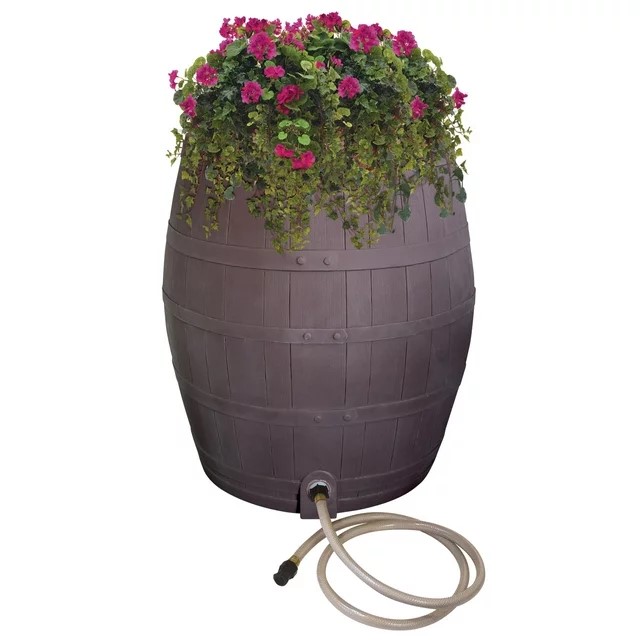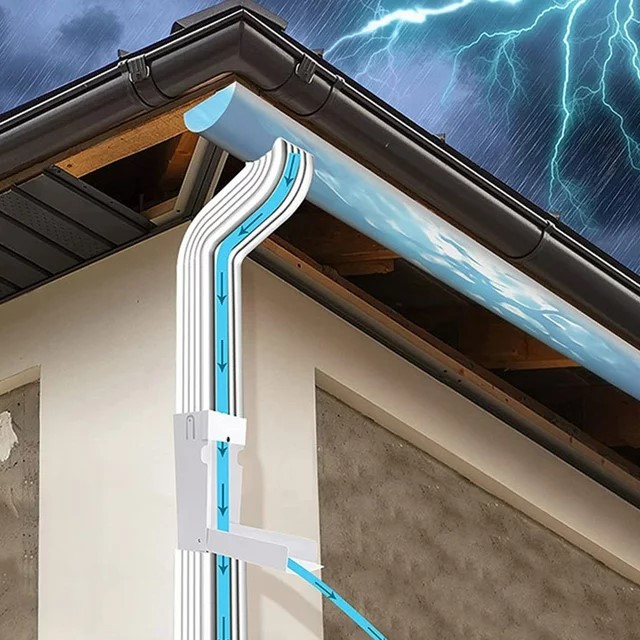Permaculture gardening projects – 3 simple DIY jobs for the weekend
Incorporating regenerative permaculture practices can transform your veg beds and backyard borders


Permaculture gardening projects can help you to transform your backyard. So, if you are seeking garden ideas for the weekend, why not consider implementing one or more of our simple DIY permaculture gardening projects?
By integrating permaculture gardening in borders and veg beds, gardeners can create sustainable and regenerative outside spaces that benefit themselves, wildlife, and the local environment.
Permaculture and organic gardening practices focus on working with nature rather than against it, often considered a holistic approach to gardening. Put simply, this includes growing a diverse range of edible and ornamental crops, caring for the soil and encouraging wildlife. Here, we share some simple and quick jobs for the weekend that will help your backyard thrive in the months ahead.
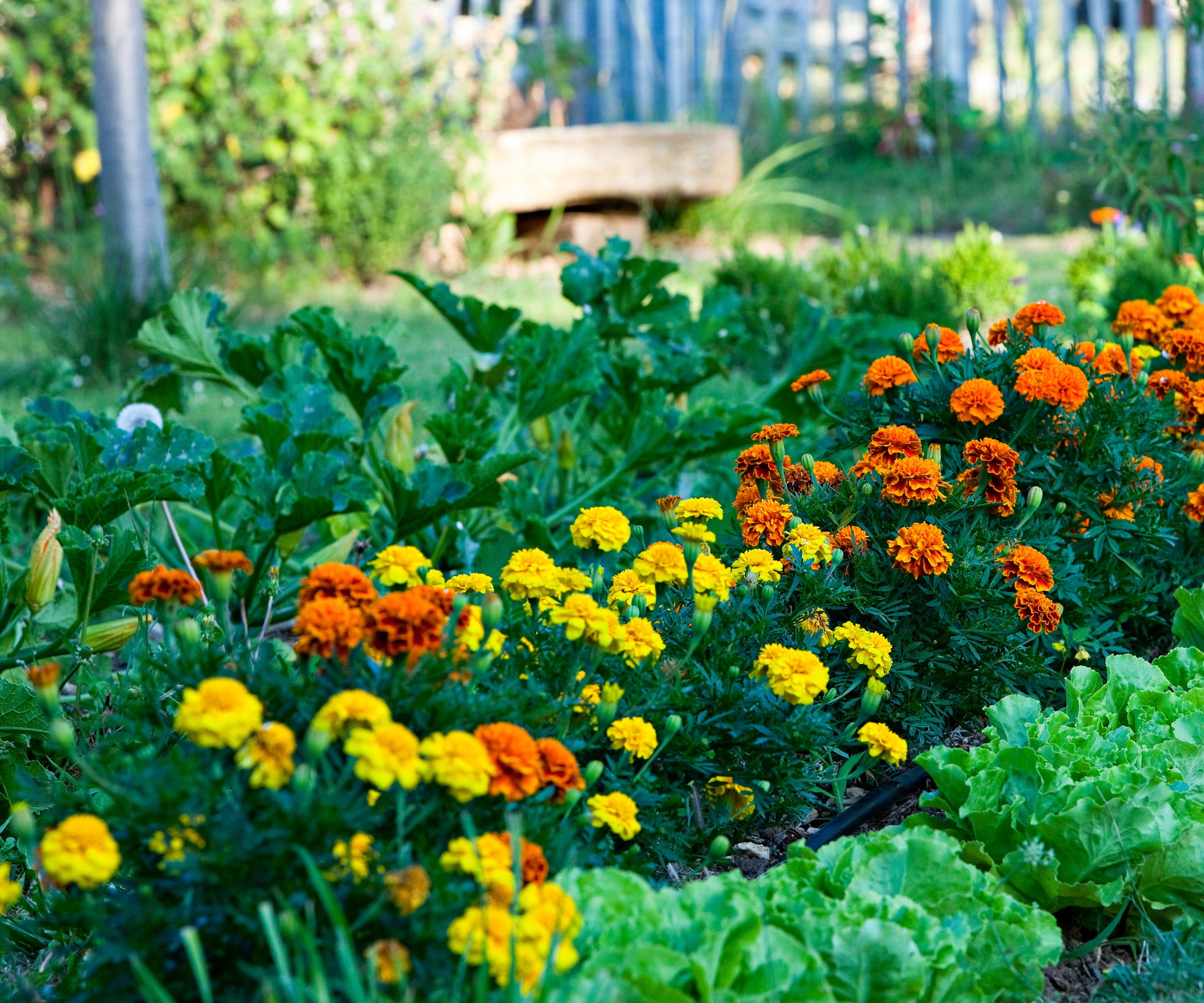
Permaculture gardening projects
Permaculture gardening projects needn't be complicated or complex. Small actions and changes in your backyard can make a big difference to plant and soil health, while also encouraging and protecting local wildlife.
1. Create some no dig raised beds

Permaculture emphasizes the importance of soil health. No-dig gardening involves mulching soil with compost from above, rather than forking and digging it over, which disturbs the soil's ecosystem.
'The best way to improve soil quality is by feeding the worms,' says Ali McEnhill, plant expert and owner of the Old Dairy Nursery in the Hudson Valley. 'Worms will in turn feed and aerate the soil.'
Save any cardboard, or kindly ask at a local store for any empty boxes they are throwing in the trash. 'I save every scrap of cardboard that I can get my hands on - worms love it,' Ali comments.
Design expertise in your inbox – from inspiring decorating ideas and beautiful celebrity homes to practical gardening advice and shopping round-ups.
As seen in the image above, 'place a layer of cardboard over the bed and then cover it with compost, mulch, or leaves,' Ali says. 'It will disappear in only a few short weeks, depending on the weather and worm activity in your garden.'
This quick project will greatly benefit the quality of your soil, improving the structure, fertility, and moisture retention in your beds.
'Do not till, do not dig. Tilling and digging breaks up the natural soil layers, and will set you back years,' Ali adds. Indeed, improving the quality of your soil now will improve your crop yields in the years to come.
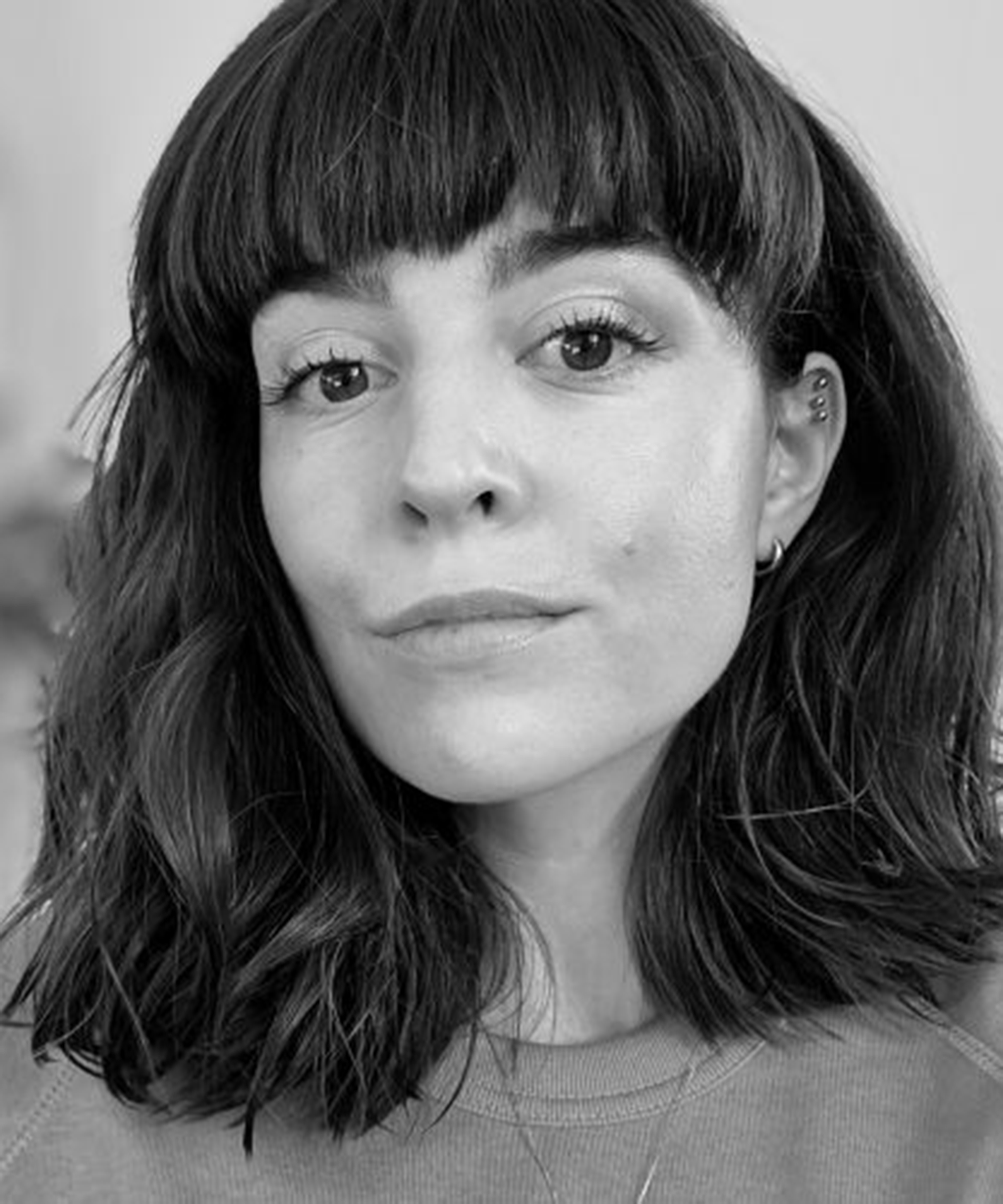
Ali is a self confessed plant geek, gardener, and propagator, owning and operating a plant nursery on an old dairy farm in New York's beautiful Hudson Valley. Ali focuses on growing hardy perennials, trees, and shrubs that thrive outdoors in the cold climate.
2. Install a rain barrel
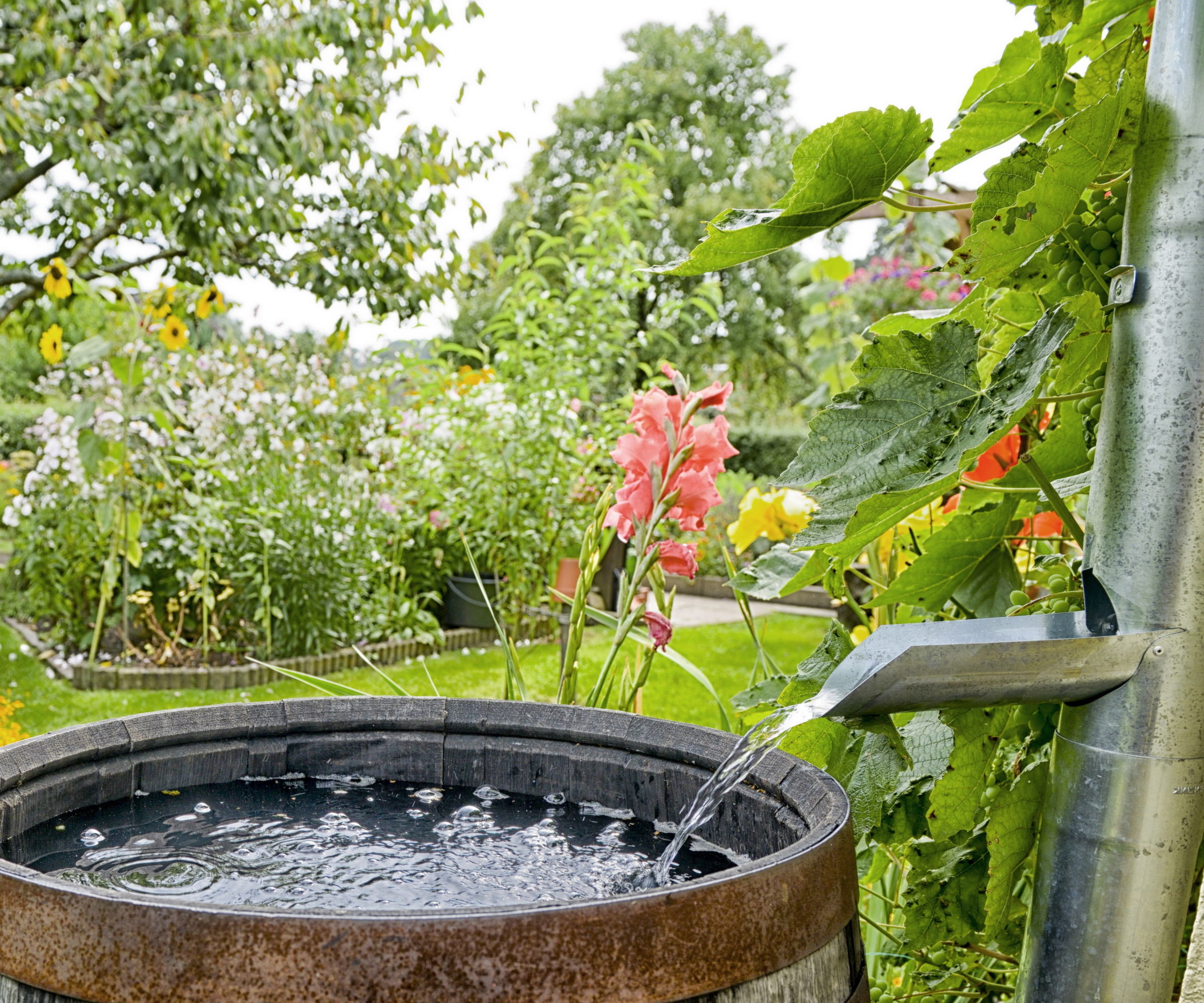
Rainwater harvesting should be a priority for every homeowner. If you are looking for permaculture gardening projects for the weekend and do not have a rain barrel, why not consider installing one? Installation is quick and simple and can conserve water and reduce surface water run-off in your yard.
Rain barrels are a sustainable way to collect rainwater, typically positioned next to a garden shed or greenhouse, whereby water can be diverted from drainpipes and stored. This can then be used during the warmer months of the year, reducing the need to use tap water.
Rainwater harvesting is an important part of permaculture philosophy. This quick and practical solution helps to reduce your water usage through rainwater reuse, thereby promoting sustainability in your backyard.
Shop for rainwater harvesting accessories
3. Build a compost bin
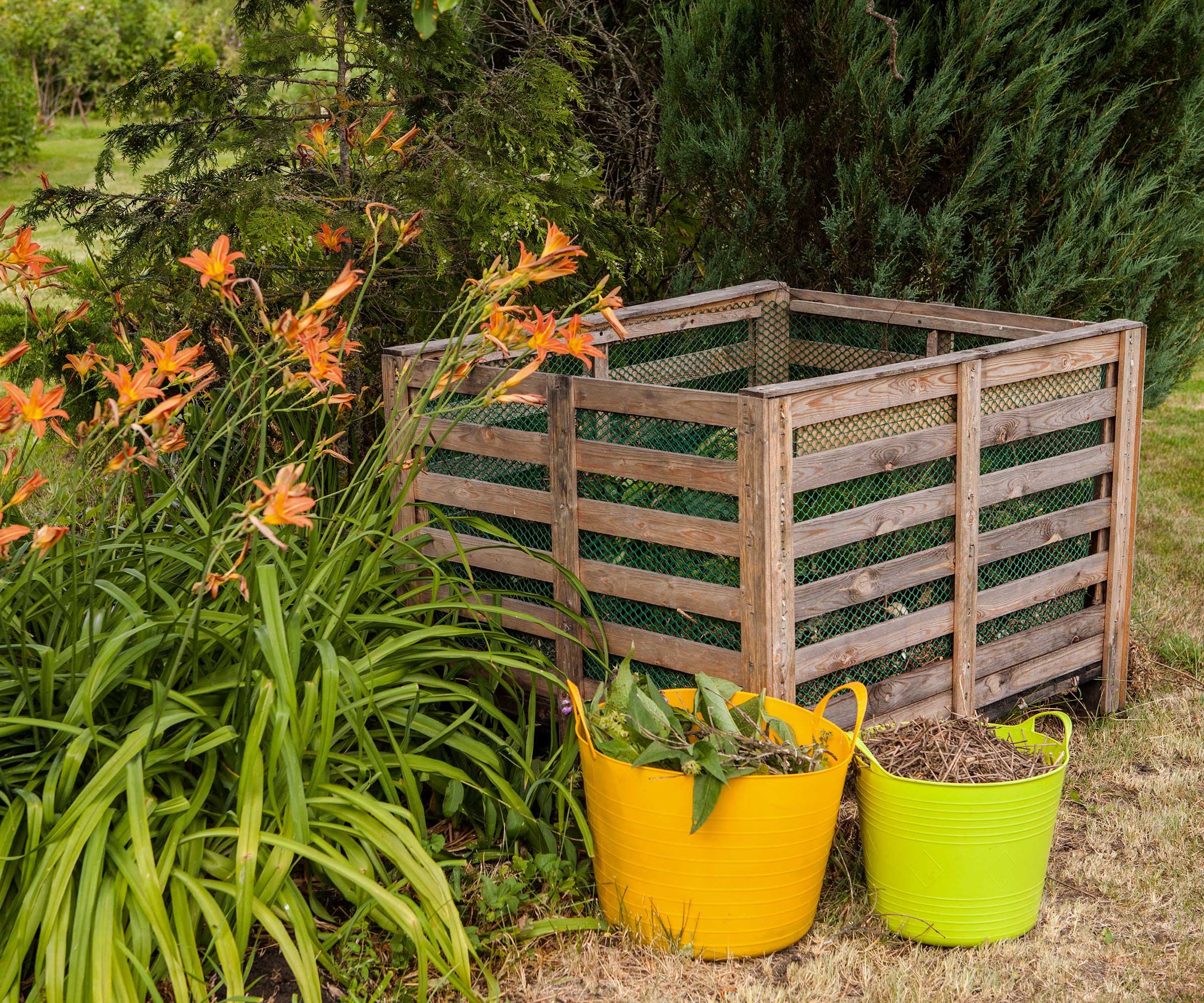
Including a compost bin in your yard is a great way to produce your very own organic matter that can provide nutrients for your backyard borders. Composting is a vital aspect of permaculture as it helps to improve the quality of your soil, encouraging earthworms and microorganisms which improves soil structure and fertility.
Many gardeners may choose to build their own open-topped compost bin, using wooden pallets or spare planks of wood, as seen in the image above. You do not need to line this wooden box, but you must ensure that there are aeration gaps.
It is important to also have a cover to prevent rainfall from entering the heap, although some water should occasionally be added. This will also help to retain some warmth in the compost bin.
Create a compost bin to suit the amount of space you have, with large backyards requiring larger, or multiple, compost bins. The best location for a new compost bin is a sheltered spot in partial or full shade, ideally out of sight and away from the home. There are also ready-made compost bins available, which are quick and easy to build.
FAQs
How can I incorporate permaculture principles in a small garden or terrace?
Even in small backyards, terraces, or balconies, permaculture principles can be followed. Select a range of edible and ornamental shrubs and flowers that are well-adapted to your climate, growing in containers to encourage pollinators. Grow as many plants as possible, but avoid using pesticides or fertilizers, following organic gardening practices. Why not also consider providing habitats for wildlife, such as bird boxes or bug hotels?
By implementing permaculture gardening projects in your yard, such as no-dig gardening, installing a rainwater collection system, or building a compost bin, you can experience the many benefits of holistic gardening.
If you are looking for a fun project to enjoy with children, why not consider how to make a bug hotel, promoting insect and bug activity in your backyard?

Thomas is a Content Editor within the Gardens Team at Homes and Gardens. He has worked as a professional gardener for both public spaces and private estates, specializing in productive gardening, growing food and flowers. Trained in Horticulture at the Garden Museum, he has written on gardening and garden history for various publications, including The English Garden, Gardens Illustrated, Hortus, The London Gardener and Bloom. He has co-authored a Lonely Planet travel book, The Tree Atlas, due out in 2024.
